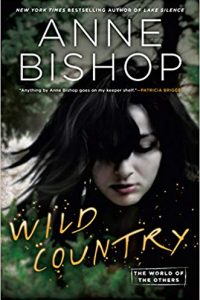Gary K. Wolfe Reviews The Little Animals by Sarah Tolmie
 The Little Animals, Sarah Tolmie (Aqueduct 978-1-61976-161-2, $20.00, 378pp, tp) May 2019.
The Little Animals, Sarah Tolmie (Aqueduct 978-1-61976-161-2, $20.00, 378pp, tp) May 2019.
Sarah Tolmie’s approach to the intersection between the historical and the marvelous is comparatively minimalist. The Little Animals is, for the most part, a straightforward account of the early career of the 17th-century Delft scientist Antoni van Leeuwenhoek, as he discovers and records various “animalcules” through his homemade single-lens microscopes and tries to get his findings recognized by Britain’s Royal Society, at the time Europe’s chief arbiter of what was and wasn’t science. As Tolmie notes in an afterword, she took some liberties in moving Leeuwenhoek’s major discoveries earlier in his career, when his first wife was still alive, and in positing a largely conjectural friendship with his contemporary Vermeer, but her main concession to the fantastic is a mysterious goose girl, who seems to have walked straight out of the Grimm fairytale to take up residence, along with her preternaturally faithful flock of geese, in Leeuwenhoek’s household (initially, he just needed the quills from the geese for writing up his notes). The girl, who as in the original folktale carries with her a handkerchief with a few drops of her mother’s blood, claims to be able to hear the buzzing of the same animalcules that Leeuwenhoek observes, and later turns out to be able to see inside the minds not only of her geese, but of a horse (named Falada, as in the Grimm tale) and even the unborn child of Leeuwenhoek’s pregnant wife. While Tolmie builds sympathetic portraits of Leeuwenhoek, his wife, Vermeer, and several secondary characters (including a local English priest grappling with his own sexuality), it’s the unnamed goose girl who haunts the narrative, a marvel of liminality and nuance, at times reticent and affectless, at times a vulnerable and lonely girl with an astonishing sensory connection to the natural world.
Historical fiction involving scientists has a natural affinity for SF readers, and for the most part Tolmie’s account of Leeuwenhoek’s methods of lens-grinding and his detailed observations of everything from the pond scum called honeydew to blood and eventually semen are fascinating, if at times a bit reliant on eureka! moments on the part of nearly everyone who first sees them (such as the visiting delegation from the Royal Society), and on a few unlikely instant deductions (such as the physician de Graaf’s immediate conclusion, upon observing sperm under the microscope, that it’s “the male, animating force made visible”). Nor do we get a very detailed account of the processes of induction that eventually led to Leeuwenhoek’s reputation as the founder of microbiology, rather than just the inventor of the microscope (which he wasn’t, not by a long shot). But in fairness, most of this likely took place after the main action of the novel.
What Tolmie does, often brilliantly, is develop a theme of patterns that reflect in various ways the underlying sense of order that seems to be emerging into the world she describes – not only the patterns of Leeuwenhoek’s observations, but the manner in which these become popular fabric designs (Delft was apparently known for fabrics before it was known for ceramics, and Leeuwenhoek himself made a living as a draper), and even in such details as his daughter’s dollhouse, the design of looms, and the sheet music that a local madam uses for her spinet. At times, these lead the narrative to drift into more information than we need about the economics of the textile trade in the Netherlands, but more often Tolmie presents us with scenes evocative of the Dutch genre painting of Vermeer and his contemporaries. That mysterious goose girl may be the only hint we get of material magic in The Little Animals, but there’s more magic in Tolmie’s tableaux of a place and time, which at once seems like a charming mannerist fairy tale and a provocative account of the birth of our own modern worldview.
Gary K. Wolfe is Emeritus Professor of Humanities at Roosevelt University and a reviewer for Locus magazine since 1991. His reviews have been collected in Soundings (BSFA Award 2006; Hugo nominee), Bearings (Hugo nominee 2011), and Sightings (2011), and his Evaporating Genres: Essays on Fantastic Literature (Wesleyan) received the Locus Award in 2012. Earlier books include The Known and the Unknown: The Iconography of Science Fiction (Eaton Award, 1981), Harlan Ellison: The Edge of Forever (with Ellen Weil, 2002), and David Lindsay (1982). For the Library of America, he edited American Science Fiction: Nine Classic Novels of the 1950s in 2012, with a similar set for the 1960s forthcoming. He has received the Pilgrim Award from the Science Fiction Research Association, the Distinguished Scholarship Award from the International Association for the Fantastic in the Arts, and a Special World Fantasy Award for criticism. His 24-lecture series How Great Science Fiction Works appeared from The Great Courses in 2016. He has received six Hugo nominations, two for his reviews collections and four for The Coode Street Podcast, which he has co-hosted with Jonathan Strahan for more than 300 episodes. He lives in Chicago.
This review and more like it in the May 2019 issue of Locus.
 While you are here, please take a moment to support Locus with a one-time or recurring donation. We rely on reader donations to keep the magazine and site going, and would like to keep the site paywall free, but WE NEED YOUR FINANCIAL SUPPORT to continue quality coverage of the science fiction and fantasy field.
While you are here, please take a moment to support Locus with a one-time or recurring donation. We rely on reader donations to keep the magazine and site going, and would like to keep the site paywall free, but WE NEED YOUR FINANCIAL SUPPORT to continue quality coverage of the science fiction and fantasy field.







